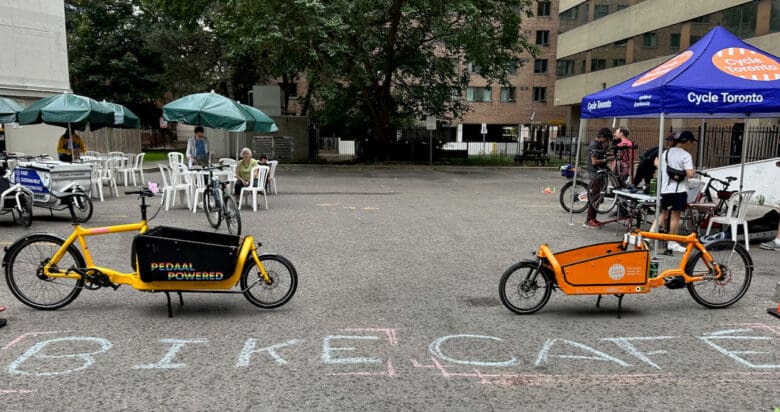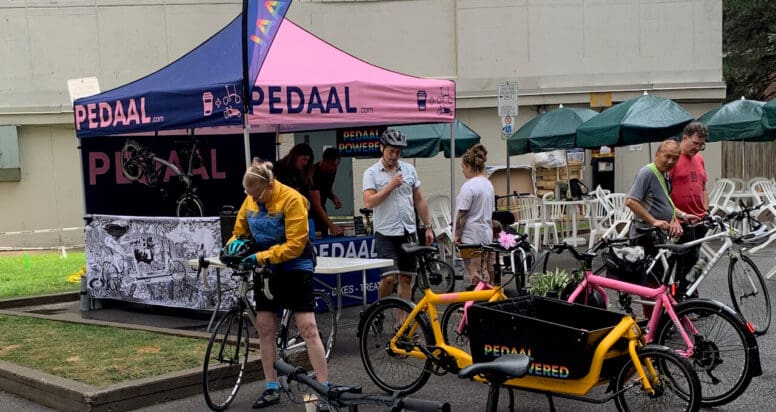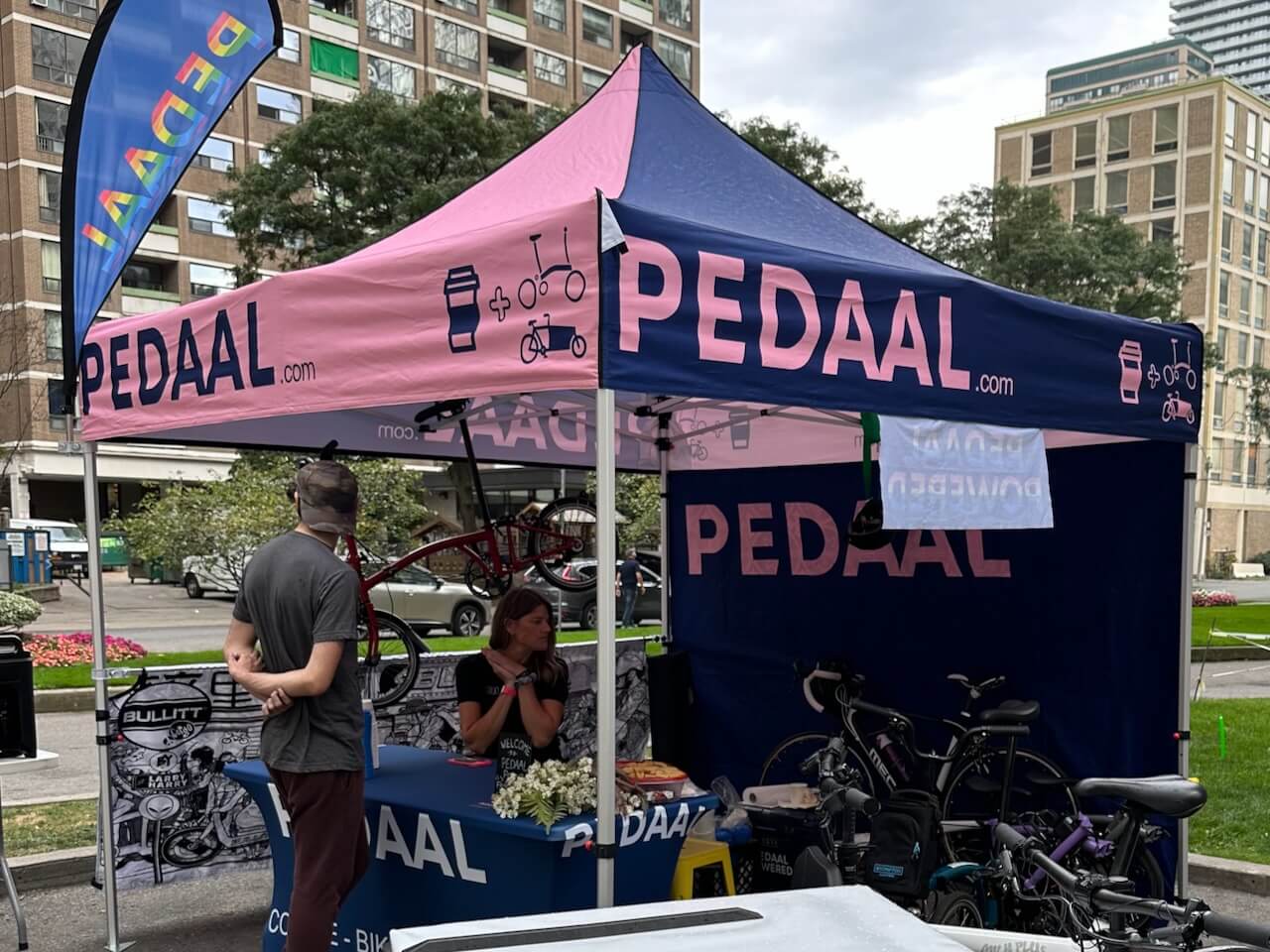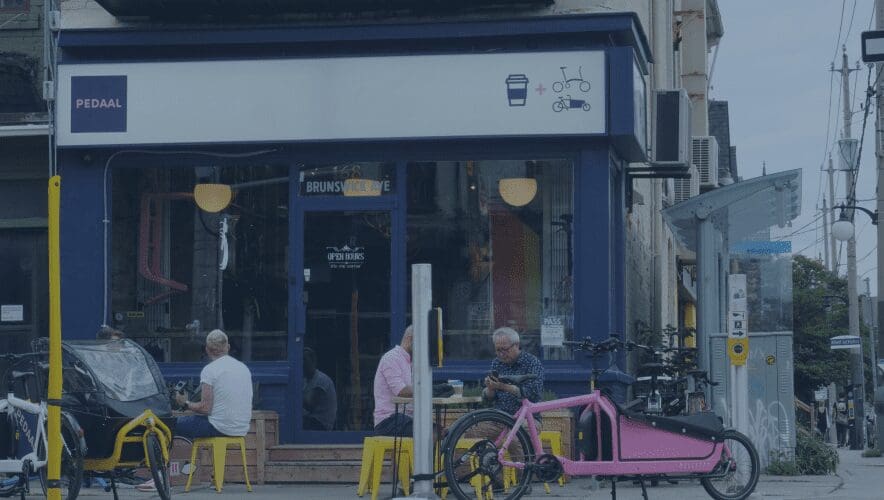First conceived in San Francisco by art-collective Rebar, Parking Day began as a guerrilla art and design activism project aimed at repurposing public space beyond the automobile. Public space, the organizers realized, all-too-conveniently defaults to the automobile. Proof of this was the high real estate value of a parking spot, yet the low cost to park. Upon analysis, Rebar realized that “at the curbside meter rates, a parking space was an incredibly cheap piece of San Francisco real estate.” And, upon further digging, it was also revealed that “it was not illegal to put something other than a car in a parking space.” So, that’s exactly what they did!
Now a worldwide phenomena, Parking Day challenges the ideological defaults we all-too-easily give private automobile use. And, in a city like Toronto, Parking Day asks us why over 200 acres of public land is given to private automobile use and what a “complete street” might look like.

Proof that Parking Day has grown beyond private citizens is when companies, especially developers, get involved. Usually this would ring alarm bells, but developers are a critical stakeholder in building complete streets; and certainly some good developers must be out there. One such developer is Tenblock. Tenblock strives to be ” a trailblazer among housing developers in the City in the design, provision, and promotion of bike-friendly facilities” (toronto.ca). “Their projects include best-in-class designed bicycle parking areas, amenities that support cycling use, and dedicated bike elevators and/or access ramps. In addition, their proposals incorporate Bike Share Toronto stations to further support the network’s fast expansion throughout the City” (toronto.ca). Much of this comes down to the issue of parking. As a developer, Tenblock’s direction is “to shift away from personal vehicle use to promote active modes of transportation by significantly reducing motor vehicle parking” (toronto.ca).
One example of Tenblock’s commitment is the new development they’re constructing on St Mary’s Street. This project will have zero space allocated for automobile parking. Zero! Instead, the project will focus on “cycling supportive infrastructure.” Compare this to the current condo occupying the site, with a multi-level below-grade parking lot and large above-ground parking lot. In fact, it is this parking lot that Tenblock devoted to Parking Day. Together with Cycle Toronto, Pedaal took over the entire parking lot, and let residents examine and try what we might call “cycling supportive bikes” – bikes that are actually designed for urban transportation, whether that’s carrying cargo and kids.

We said condo’s are critical to complete streets, and it’s true. The problem is that most developers tend to view bikes as recreational toys, not transportation. As a result, bikes aren’t allowed into units – this often even includes folding bikes! – and bicycle parking is an afterthought: sold as secure but not secure at all. When developing bicycle infrastructure in Holland, designers ensure that visibility is key. Most cyclists know to “prioritize well-lit, high-traffic areas for parking your bike. Thieves are less likely to target bikes in areas where they are easily visible and where potential witnesses are present.” (bikecyclingreviews.com). Thus, the more the bike is invisible – buried in parking garage P5 – the greater the target it is. According to a recent study, in 2020, 30% of all Toronto bicycle thefts occurred inside condo garages, tripled from 2014 (toronto.citynews.ca).
As said, the problem is that these rules are based on an antiquated views of bicycle use. People move downtown to have a high-proximity lifestyle. Economically, this is measurable: think of “Walk Scores.” Walk scores increase property value based on a high-proximity lifestyle. Nonetheless, it remains the case that a high-proximity lifestyle is far more bikeable than it is walkable. While everything is much closer downtown, most distances are still too close to drive and too far too walk. The bicycle solves this problem! And, that means that the bicycle deserves priority of place if the developer cares for the reasons a condo owner views liveability downtown. But instead, many developers have created a bottleneck. People move downtown with the intention to have a bikeable life only to have their bike stolen in substandard condo parking garages. Or, they can’t take their bike up to the unit. Or, there’s simply no bicycle parking at all.

As Gertrude Ledsham observes:
Bicycles are often perceived as ‘out of place’ even while being used on the street and they attract even more negative attention when brought into shared living spaces such as hallways and elevators (Aldred & Jungnickel, 2013). When combined with a lack of official on-site bicycle parking, or even public bicycle parking in suburban neighbourhoods (BikeSpace, 2021), these rules, or even social approbation about bicycles in shared spaces, make bicycling for transport impossible for many apartment residents.
All of this matters because 50% of Toronto’s population resides in multi-floor apartment buildings and another 5% live in apartment or flats in duplexes (Statistics Canada, 2016). And the rules a developer makes for a condo can only be changed by the incoming condo board. And, this isn’t so simple, because
…the problem with this process is that any changes must be put to an owners’ vote. And since the condo board is supposed to uphold the condo documents written by developers, such amendments usually require 95 per cent approval. (Nexthome.ca).

So, what a thrill to work with a developer who sees their role in contributing to low-impact and more liveable developments. Our cargo bikes and folding bikes weren’t just placed on a parking lot, they will one day replace this parking lot. That’s what Parking Day is all about!



